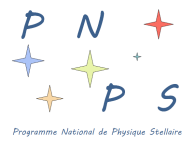Strong shocks are present in various astrophysical contexts and can be the proxy of fundamental plasma accretion processes. Such shocks are strongly influenced by the radiation through its coupling with hydrodynamics. Thus their topology and dynamics are quite complex. Generating such hypersonic shocks in the laboratory, with controlled conditions, is thus an adequate tool to study the influence of radiation and to compare them with numerical simulations. Such shocks can be generated by intense lasers. We conducted two experiments at the PALS laser facility. The first, to study the collision between two counter streaming radiative shocks. Providing a new experimental platform, these experiments are being studied by the presence of another. The experiments with different shock speeds (~ 30-55 km / s and 10-25 km / s), at a range of different pressures (~ 0.1-0.6 bar), and with different gases (Ar, Xe). In the second experiments, we launched a single radiative shock (different speed ~ 45-85 km / s) different gases (Ar, Xe), at a range of different pressures (~ 0.1-0.6 bar).
Such radiative shocks are characterized by the development of radiative precursors preceding the shock itself. Different diagnoses are also possible to estimate the shock velocity of the electron density and precursor geometry. Estimation of the temperature was obtained through XUV spectroscopy. These experimental results will be compared with the results of numerical simulations.



